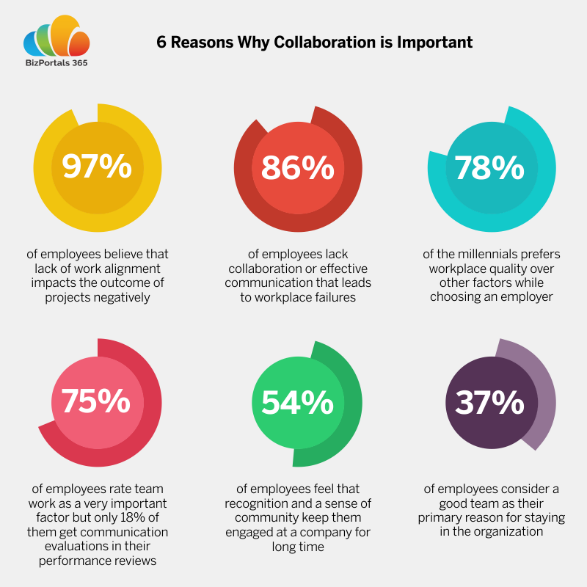

- Collaboration tools examples knowledge management how to#
- Collaboration tools examples knowledge management full#
It should also set up and facilitate communities of practice ”.Īs an assumption, enterprises must be open to information sharing and create cultures of trust and cooperation to unfold the full potential of social technologies. Small Business Administration), “The HR function should be taking a leadership role in identifying tools for collaboration. According to Kevin Mahoney, Chief Human Capital Officer (U.S. Counting more than 1.5 billion virtual community members, this growth indicates the primary appeal of social technology which brings the speed, scale and economics of the Internet to social interactions on corporate level.Ĭompanies will have to transform their organizational structures, processes and cultures to become an extended networked enterprise that is connected well internally, as well as externally. A new class of company is emerging – one that uses collaborative Web 2.0 technologies intensively to connect the internal efforts of employees. Web 2.0 has opened a new frontier for coordinating work as businesses and organizations leveraging the power of networked technologies to drive the next significant phase of Internet productivity. Jonathan Becher, Chief Marketing Officer at SAP, hits an essential point with his statement.
Collaboration tools examples knowledge management how to#
"Everyone knows that the future of work is engaged employees who collaborate to get things done but struggle to figure out how to get there ”. Keywords – Community of Practice, Learning Theory, Knowledge Transfer, Digitised Community of Practice, Virtual Communities, Collaboration, Human Resource Development 1. The paper concludes with a navigator that has been evolved through merging the major findings of the literature analysis, the field research (expert-interviews) and personal contribution. The review includes the identification of the HR-professional as a key player and stakeholder within the context of establishing a digitised CoP. Significant learning opportunities are identified within those communities, which are affirmed through a well-founded literature review on the topics “Learning Organizations”, “Web-based Learning” and “Development of a framework for Human Resource Development”.

In order to build an understanding of how CoP create organizational value, the thesis not only focuses on the acknowledged learning theory models but also on the characteristics and benefits of those communities themselves as well as on virtual communities in general.

Furthermore, the paper reviews how technology can be introduced to reinforce communication and collaboration within the community. The thesis examines how learning develops in this context and constitutes the basic theoretical attainment that is aligned to CoP. Communities of Practice have been identified as important sites of learning through creating and sharing knowledge within its social structures. This paper explores the practicable establishment of local Communities of Practice (CoP) on a virtual level to foster the augmentation of knowledge, sharing of practice and employee development. Illustration 14: Digitized Communities of Practice – Navigator for Distribution Abstract Illustration 13: Digitized Community of Practice - Matrix Illustration 12: Qualitative analysis of interviews Illustration 11: The role of HRD in creating and supporting digitised Communities of Practice Illustration 10: Comparison of various technologies useful for managing Communities of Practice Illustration 9: Cultivation of Communities of Practice through Managers Illustration 8: Knowledge Claims, Strategies of Inquiry, and Methods Leading to Approaches Illustration 7: A Framework for the Human Resource Development Process Illustration 6: Major benefits of Communities of Practice Illustration 5: Life Cycle of Development of a Community of Practice Illustration 4: Knowledge Sharing through Communities of Practice Illustration 3: Evaluating Web-based learning environments Illustration 2: Model for constructivist learning environment Illustration 1: Typology of virtual communities Illustration not visible in this excerpt List of graphics 2.1.4 Virtual communities for learning and developmentĢ.2.1 Situated Learning and Legitimate Peripheral ParticipationĢ.2.2 Organizational Learning in Communities of PracticeĢ.2.2.1 Community of Practice as social learning systemsĢ.3.2 Characteristics of Community of PracticeĢ.4.2 A framework for Human Resource DevelopmentĤ.1 Establishing an effective, digitized Community of Practice for knowledgeĤ.2 The HR-role in creating Communities of PracticeĤ.3 Navigator for establishing a digitised Community of Practice


 0 kommentar(er)
0 kommentar(er)
